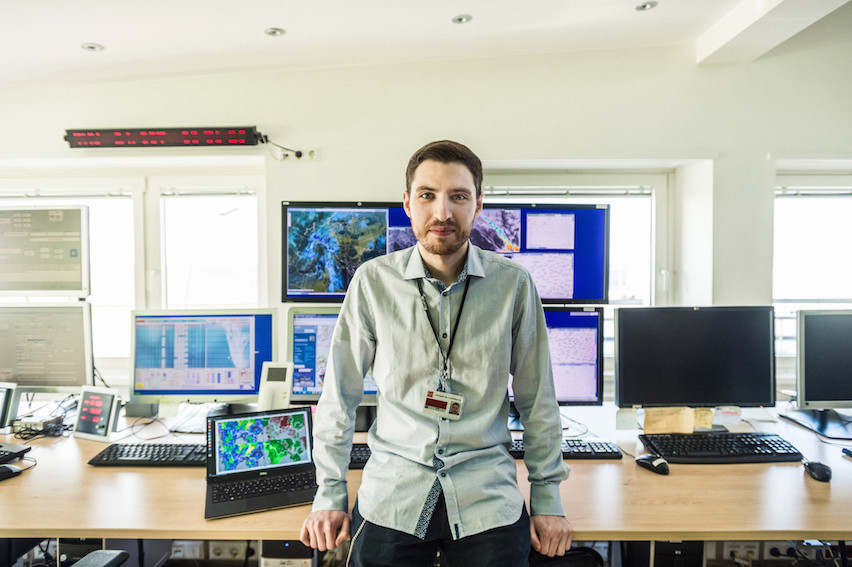It was an F2 intensity tornado, which corresponds with wind speeds of 180km/h-250km/h. Nineteen people were injured, two severely, but no one was killed. Several hundred buildings were damaged.
Although tornadoes are infrequent in the grand duchy, they are not entirely unknown either, according to Luca Mathias, a meteorologist at Meteolux. For example, there were confirmed tornadoes in 2012, 2014 and 2015, and separate suspected tornadoes in 2014 and 2015. All but one of these struck the northern half of Luxembourg (the exception being a tornado that hit Munsbach in February 2015).
Mathias is one of 25 meteorologists at Meteolux, which is part of the Air Navigation Administration. There is an average of 200 to 300 tornadoes in Europe each year, mostly (but not always) taking place between May and August, he states. They are more frequent in southern England, northwestern France, the Benelux countries, Germany and northern Italy (but can occur elsewhere). Between 1950 and 2013, tornadoes in Europe killed 316 people, injured more than 4,400 and caused about €1bn in damage.
Strong European tornadoes are typically formed when colder northern air clashes with warm, humid air coming up from the Mediterranean. “An elementary ingredient for the formation of tornadoes is a strong vertical change of wind direction and speed within the lowest 1km-3km of the atmosphere. These conditions were met this past summer when a low pressure system was centred near the British Isles,” he told Delano.
The August tempest was a multi-vortex tornado, which means several smaller vortices intermittently formed around the main vortex. Although Mathias says the ‘smaller’ spirals can pack as much punch as the central vortex. Much about tornadoes remains a mystery to scientists (they are better studied in the US, he observes), however, they typically (but not always) dissipate when they are completely surrounded by heavy rain.
The most severe damage was recorded in Pétange and Bascharage, says Mathias, himself a native of Bascharage (his home was undamaged). Debris from homes in those two towns, including personal documents like vaccination records, was recovered in Dippach and Reckange. If you pull out a map of southwestern Luxembourg, you’ll notice the tornado’s path roughly follows the regional road between Longwy and Luxembourg City. This is an unfortunate “coincidence” that has nothing to do with the area’s terrain, says Mathias. If the tornado had tracked just a bit to the north, the level of injuries and damage would have been significantly lower, he reckons.
If a tornado strikes, “do not film it at the window,” Mathias advises. Go to a cellar, if you have one, or a closed-off room like a bathroom without windows. Above all, “do not go outside”. If driving, do not park your car under an overpass as “wind speed increases under bridges” and they are “very dangerous” spots. Try to drive away from the tornado or stay away as far as possible.
Meteolux is currently developing its own app, complete with forecasts and weather warnings, with release targeted for 2021. Until then, its alerts are sent (in French and German) via email and through the media and government agencies. It will also publish a detailed report about the August tornado in English on its website in the coming months.
